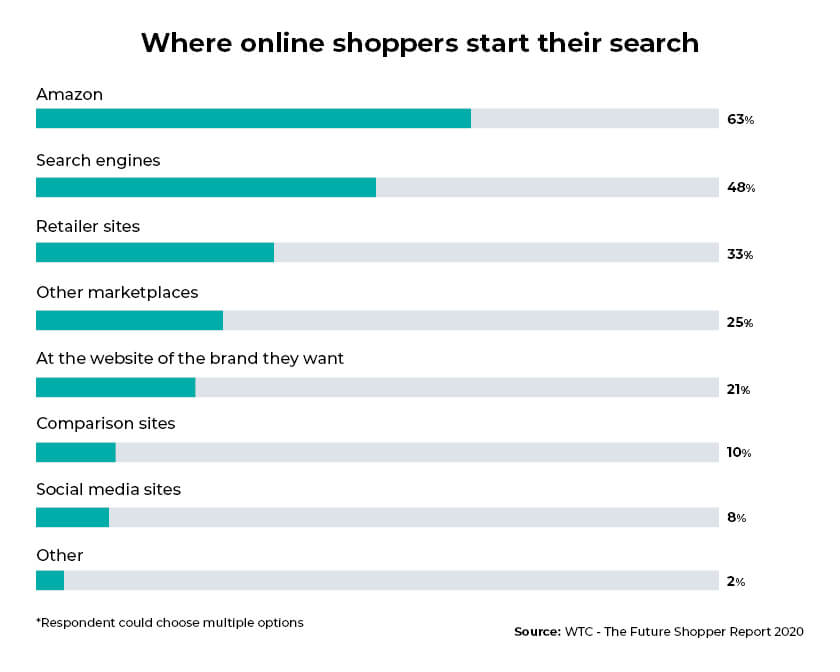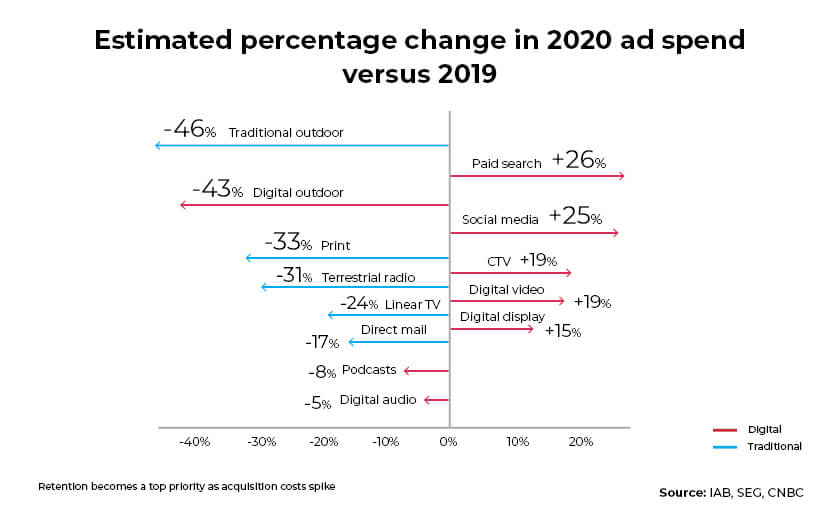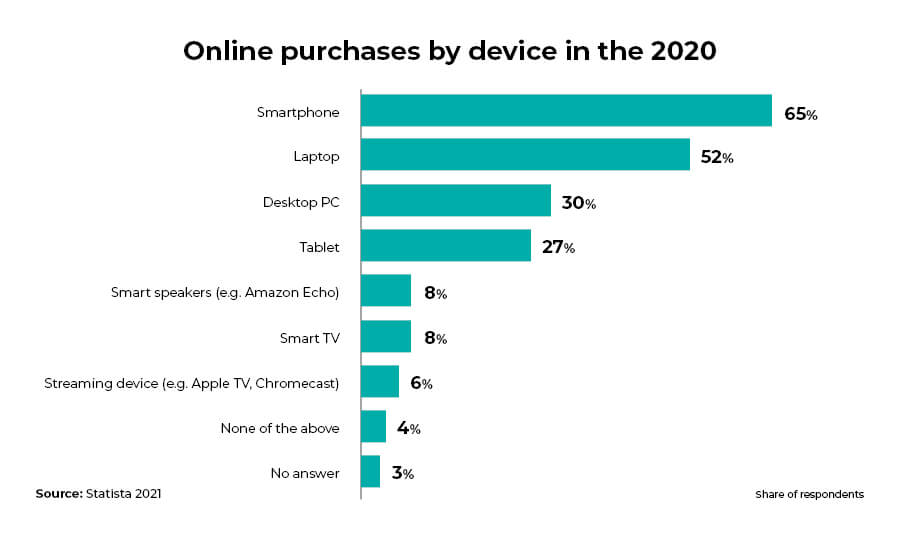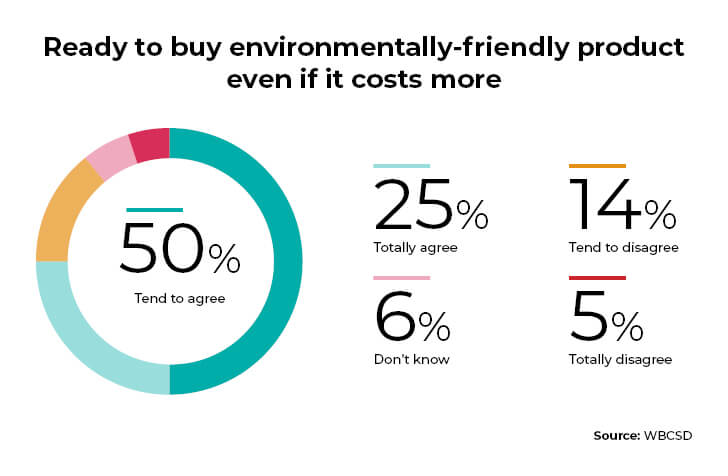While global lockdowns brought the world to a standstill, online marketplaces and retailers could hardly keep their feet on the ground. Being a banner year for e-commerce, the US alone saw a growth leap of 44% in 2020. That’s a decade’s worth of growth in just three months. This exponential progress has surfaced some key e-commerce trends that are expected to stay post-COVID-19 and way into the future.
Owing to product unavailability and inaccessibility, the pandemic compelled considerable brand loyalty shifts. Studies reveal that 75% of US consumers tried different stores, websites, and brands due to the crisis. What’s more interesting is that 60% of these consumers plan to stick to these new brands and stores in their post-COVID-19 lives.
To help you keep pace with such monumental shifts, deftly navigate growth barriers and refine your online customer experience, here are the most impactful e-commerce trends every brand and retailer must know to win in the new normal:
Online marketplaces dominate brands
As the pandemic evolves, online marketplaces are squeezing more products on their digital shelves, as they onboard a new cohort of brands every day. With 63% of people starting their shopping journey on Amazon rather than Google, there are more chances of your brand being discovered on Amazon versus the internet.
The bottom line: Brands cannot ignore selling on online marketplaces if they want to see tangible conversions. Given the apprehensions most brands face on minimal customer visibility, muted brand image, and more, understand how other players are maneuvering to gain a market edge.

Rising cost of customer acquisition
87 US dollars – That’s the average cost of customer acquisition in retail/e-commerce. Customer acquisition costs ideally get amortized in the future through repeat customer purchases. But with loyalties being lost within a few clicks during the pandemic, for brands and retailers acquiring new customers has become a costly affair.
Add to it the fierce online competition and surmounting costs of ad spends on Google paid search. Amid such uncertainties on advertising ROI, a clear takeaway from this e-commerce trend post-COVID-19 for brands is to focus all their digital marketing and sales monies on retaining existing customers. Quite in line with the saying, a bird in hand is worth two in the bush.

Find out how successful e-commerce brands are growing their customer base,
despite increasing acquisition costs.
Download the whitepaper.
Omnichannel is the new norm
Lockdown routines saw most shoppers switching between devices. What’s interesting to note from the chart below is that despite having access to a laptop or desktop, as most people were shopping from home, mobile was still a unanimous favorite.

Therefore, brands and retailers can’t afford to ignore this clear conversion channel. Savvy players are working on providing a seamless mobile web experience. Why? Because 57% of customers won’t recommend a business with a poorly designed website on mobile. Plus, when it comes to customer support, more than 50% of customers would rather text than call for assistance.
The Internet of Things is yet another technology adding new channels for brands to tap into primed customers. For instance, we now have smart refrigerators that directly contact the customary retailer for replenishment.
Another significant e-commerce trend witnessed post-COVID-19 is that online shopping journeys now take place outside of the brand’s website – from social media to live-streaming commerce, marketplaces, and more. And brands that stick to traditional architectures are struggling to keep up and adapt to these new customer touchpoints.
Dynamic pricing helps relieve pressure on margins
With the pandemic spurring economic volatilities and demand fluctuations, dynamic pricing has become the order of the day. When applied strategically, dynamic pricing allows brands and retailers to maximize their profit margins.
80% of customers view price as the number one deciding factor when making a purchase. So while dynamic pricing is a win-win when it comes to offering the best price without thinning your margins, it is also a double-edged sword. Frequent price changes can dampen the shopping experience, or worse, cause customers to lose trust in the brand. What brands need is a data-driven and strategic approach to win.
Personalization by intent prediction
80% of shoppers are more likely to buy from a brand that offers them personalized experiences. Uncovering the intent behind a purchase is enabling online brands and retailers to sharpen their personalization implementations. Intent prediction also helps glean customers mere browsing from primed buyers. Identifying this equips you to not only shorten their customer journey but enhance their experience as well.
Most online websites and marketplaces offer personalization through two systems:
1. Collaborative system: Where multiple users are recommended products from a similar category as the one they are browsing
2. Content system: Where shoppers are recommended products from the same category based on their past searches
As effective as these architectures may be, they miss addressing two critical purchase drivers – the impulse that triggers shoppers to browse and the intent that spurs a purchase decision. Not being able to effectively tackle these translates to diluted customer targeting efforts.
Social and environmental responsibility
Customers are growing increasingly mindful of the impact every delivery has on the environment and social issues. This has been quite an eye-opening e-commerce trend witnessed post-COVID-19. Even amid an economic crisis, 50% of shoppers tend to agree they will pay more for an eco-friendly product.
This zeal for sustainable products and packaging will see brands that implement such practices win over those that don’t. Shipping companies like FedEx and UPS for their part are already offering paperless invoicing among other green options.

Influencers become brand partners
The pace at which social commerce is growing, influencer marketing is poised to flourish from USD 6 billion in 2020 to USD 24.1 billion in 2025. With global quarantines increasing social media usage, studies suggest that interactions with sponsored posts reached 57 million in July, nearly five times the amount from March 2020. Brands eager to gain social proof and create authentic conversions around their products online are clearly placing their confidence in influencer collaborations.
Yet, this is not as easy as it seems. Uncovering the best influencers to promote their products, evaluating the quality of their social clout, deciding what level of content control to allow them, and predict the ROI of these efforts. All these were some of the biggest deciding factors brands struggle to effectively answer.
E-commerce is expected to continue its growth trajectory even after the pandemic is over. Even as new consumer trends surface, most of these behaviors and patterns will continue to drive more permanency in the post-COVID-19 world.
For brands and retailers to succeed in the new reality, understanding the latest e-commerce trends post-COVID-19 and how they can capitalize on them is imperative. Our latest whitepaper, 7 E-commerce Trends Shaping Digital Strategies Post COVID-19, developed in collaboration with industry expert Pavel Zaslavsky, explains how brands and retailers are adapting to these e-commerce trends. Click here to download.






